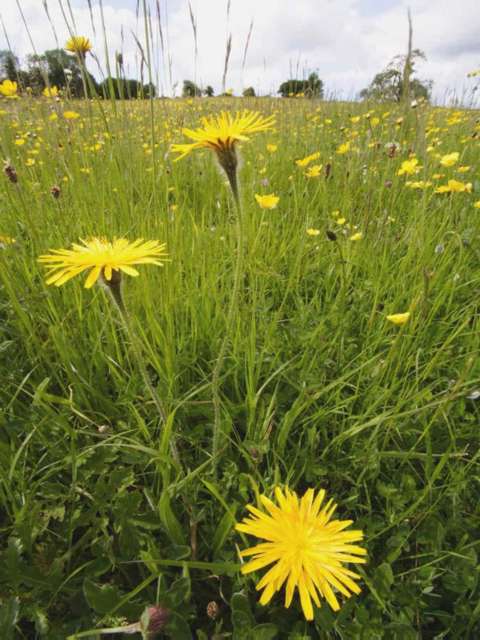
In the pursuit of a flawless lawn, the persistent Hawkbit emerges as a notable adversary. This article unravels the distinctive features of Hawkbit, its impact on lawns, and effective strategies for identification and management. Explore insights into maintaining a vibrant, weed-free landscape amidst the persistent presence of Hawkbit.
Hawkbit, In Short
Identification
Life Cycle
Impact on Lawns
Management Strategies
Conclusion
Part of the dandelion family along with Cat’s Ear, Hawkweed and Hawks Beard.
Generally only found in dry or neglected lawns, use our recommended weed killers for one hit success, hand weeding this one is difficult due to its long tap root, between treatments pinch off flower heads to prevent seed formation.
Hawkbit, scientifically known as Leontodon spp., is a perennial broadleaf weed recognizable by its dandelion-like appearance, characterized by yellow flowers and lobed leaves. Identifying these features is essential for accurate detection within the grass in lawns.
Understanding the life cycle of Hawkbit is fundamental for successful management. As a perennial weed, it reproduces through seeds carried by the wind. The seeds' ability to disperse easily contributes to the widespread presence of Hawkbit.
The invasion of Hawkbit can significantly impact the aesthetics and health of a well-manicured lawn. Its ability to produce numerous seeds and establish colonies challenges the growth of desirable grass varieties. Hawkbit's presence can result in patches of weakened or thin turf.
Manual Removal: Hand-pulling or using a weeding tool is effective for smaller Hawkbit infestations. Regular monitoring and thorough removal, including the deep taproot, are crucial to prevent regrowth.
Mowing Practices: Regular mowing can help control Hawkbit by preventing the formation of flowers and reducing seed production. Adjust the mower height to discourage weed growth while promoting the health of the surrounding grass.
Chemical Control: Selective herbicides designed for broadleaf weed control in lawns can be applied to target Hawkbit. Follow product instructions carefully and apply during the weed's active growth phase.
Cultural Practices: Promote a robust lawn through proper watering, fertilization, and aeration. A well-nourished lawn is more resilient against weed invasions, including the persistent Hawkbit.
Confronting the persistent presence of Hawkbit in your lawn necessitates a dedicated and strategic approach. Armed with knowledge about its life cycle and characteristics, homeowners can implement effective management strategies. Manual removal, strategic mowing, and targeted herbicide use stand as crucial elements in a comprehensive defense against the resilience of Hawkbit.
Building a resilient lawn through proper cultural practices, including optimal watering and fertilization, acts as a natural deterrent against invasive weeds like Hawkbit. As you embark on the journey to reclaim your green sanctuary, remember that a combination of dedication and diverse tactics will lead to success. By integrating these strategies into your lawn care routine, you can enjoy a lush, weed-free landscape that enhances the beauty of your outdoor space.
In conclusion, the key to a vibrant, weed-free lawn lies in a holistic approach that addresses the immediate threat of Hawkbit while fortifying the overall health of your turf. Through diligence and a combination of these strategies, you can reclaim and maintain the green haven you envision for your outdoor space.
One Stop Lawn Care
Spring Starter Lawn Treatment
Get the season off to a great start.
More DetailsEarly Summer Lawn Treatment
Green and strong all summer long.
More Details